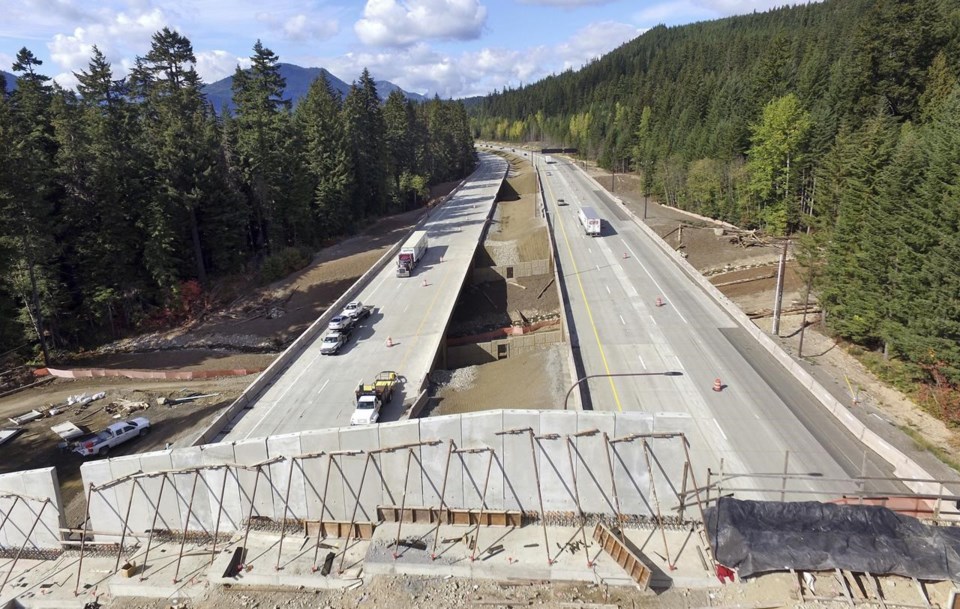SANTA FE, N.M. (AP) — New Mexico will build its first wildlife highway overpasses for free-roaming cougars, black bears, bighorn sheep and other creatures large and small and will also set aside $100 million for conservation projects, under two bills signed Thursday by Gov. Michelle Lujan Grisham.
Advocates for the initiatives say the state stands to capture millions of dollars in and an array of established conservation programs. New Mexico hopes to expand efforts ranging from river stewardship to outdoor adventures for young people from low-income households.
The state's first wildlife bridge is likely to span a state highway that traverses remote desert oilfields and Native American lands of the Navajo Nation, Jicarilla Apache Nation and several pueblo communities, including a treacherous hotspot for wildlife-auto collisions north of Cuba, New Mexico.
Several hundred large animals — primarily deer and elk — are killed in the state each year by collisions that can also total cars and severely injure human passengers. The state estimates property damage from such wrecks at nearly $20 million annually, while unbroken roads also fracture habitats for monitored species of concern including the ornate box turtle, white-nosed coati and gila monster.
Recent casualties include a roughly 4-year-old mountain lion that previously bore kittens and was struck and killed on State Highway 550 at Santa Ana Pueblo in January at night.
Glenn Harper, manager of the Santa Ana Pueblo Range and Wildlife Division, said the pueblo is committed to establishing safe corridors for wildlife and that it shared a trove of GPS tracking data when state agencies were identifying the first crucial locations for bridges. The state Legislature commissioned the plan in 2019.
“We have a pretty good sense of where these animals want to cross the highway,” Harper said. “As communities are growing around the pueblo, it becomes a cultural preservation issue. The pueblo is closely tied and entwined with the natural world.”
Nearby states including Colorado, Arizona, Utah and Nevada already have invested substantially in wildlife crossings. And California last year broke ground on — a bridge over a major Southern California highway for mountain lions and other animals hemmed in by urban sprawl.
The second New Mexico bill signed Thursday places $50 million in a permanent trust aimed at generating investment earnings, plus a $50 million spending account to underwrite established programs in environmental stewardship, forest management, watershed health, outdoor recreation, agriculture, historic preservation and species protection.
Many Republicans in the legislative minority opposed the conservation trust bill over concerns the state might expand public land holdings by unfairly outbidding individuals including ranchers. Opposition among Republican legislators to the wildlife crossings plan was more muted.
The state joins others in the Western U.S. that already fund their own, similar conservation trusts that help them apply for federal financial awards. Such trusts are underwritten by lottery proceeds, taxes on cannabis or money borrowed from bond investors, said Brittany Fallon of the conservation group Western Resource Advocates.
At a signing ceremony inside an REI Co-op store, Lujan Grisham highlighted New Mexico's efforts to set aside billions in investment accounts for future spending on conservation programs, infrastructure and early childhood education.
More is needed to ensure natural wonders survive the next 50 years amid a financial windfall in state income linked to local oil production, she added.
“We have to start thinking big in the context of how expensive it is to do the right public safety and conservation work,” Lujan Grisham said. “It is in fact expensive because it is a generational investment in the well-being" of New Mexico.
Last week the Legislature sent the governor a record $9.6 billion annual spending proposal, along with a $1.1 billion tax relief package. She has until April 7 to veto any provisions.
Morgan Lee, The Associated Press




